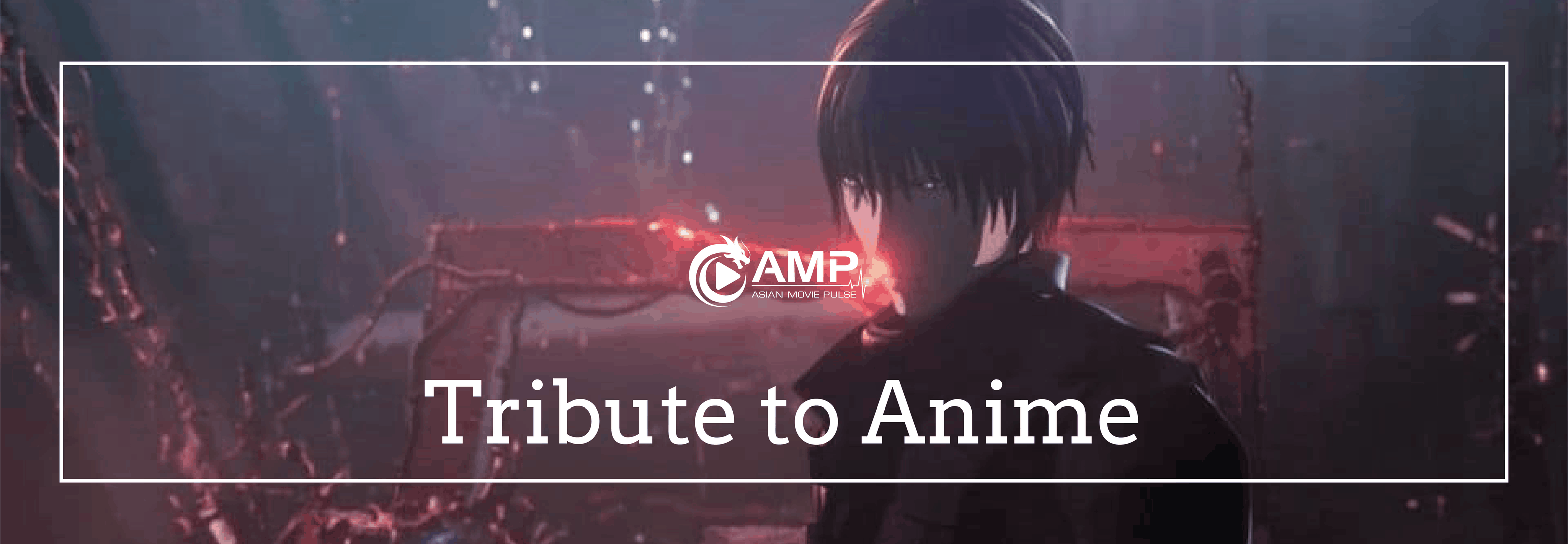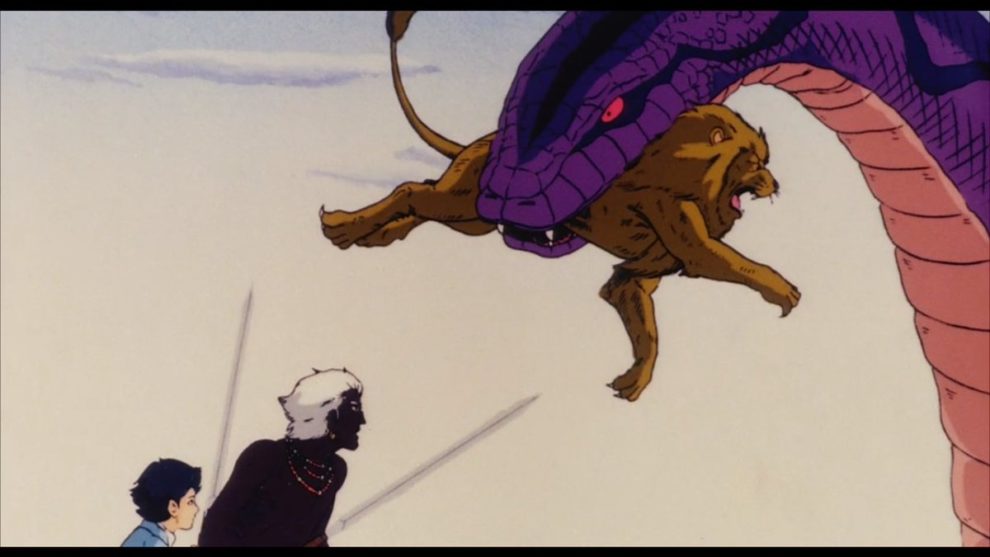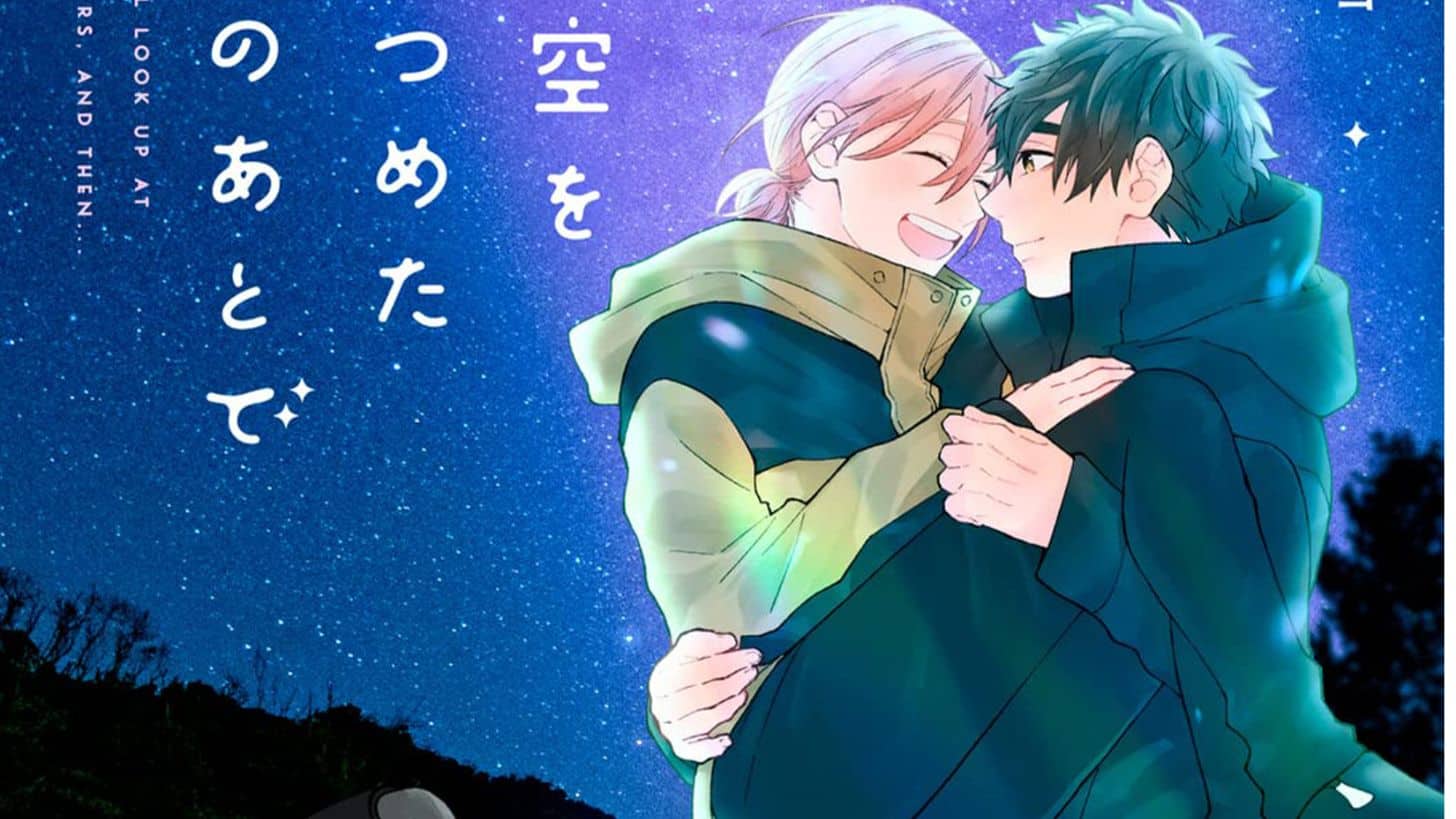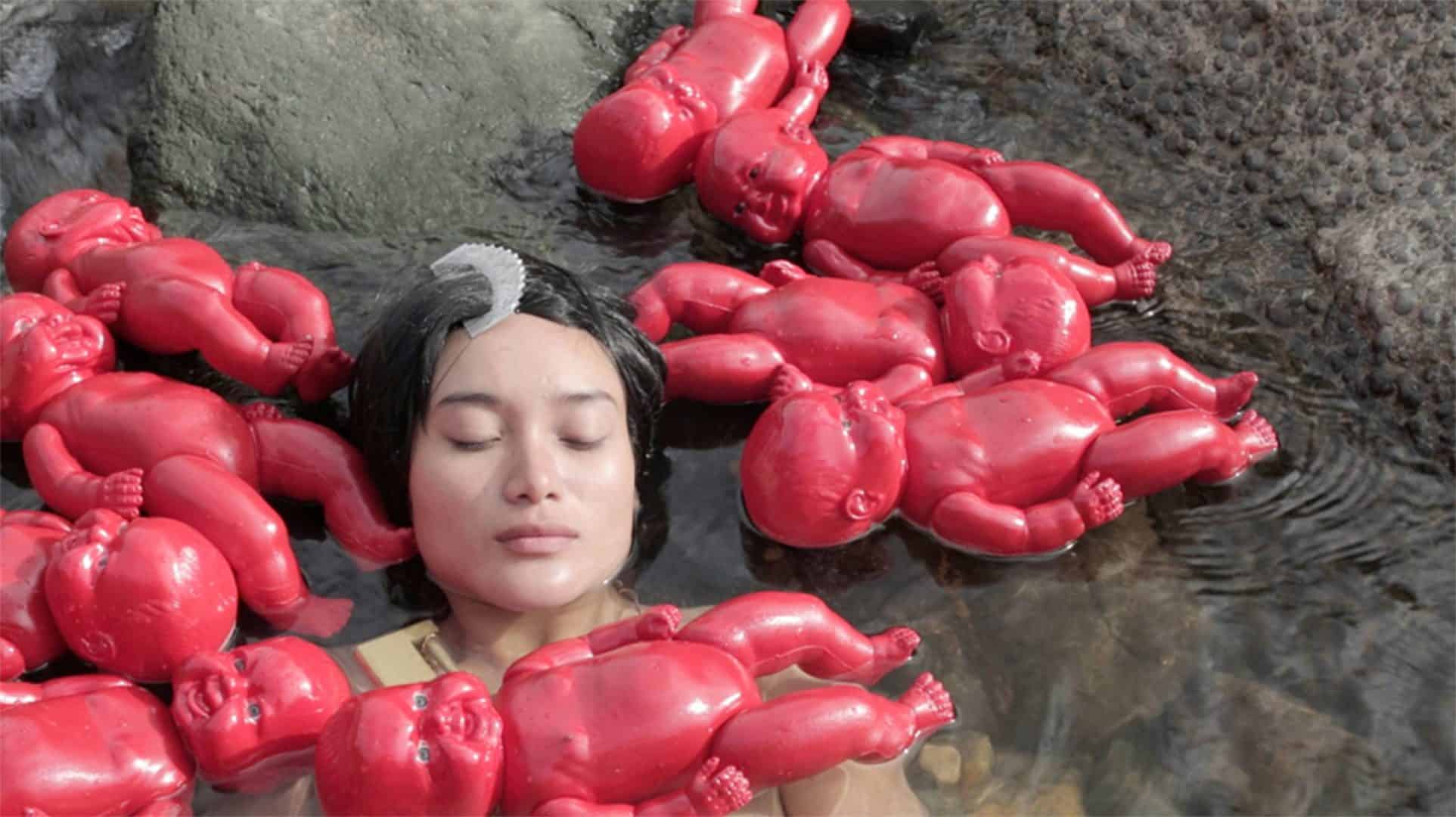Based on the popular character developed by Soji Yamakawa, a highly popular writer of picture stories, a number of which focused on Africa (“Young Boy King” and “Tiger Boy”) who also appears in the beginning and ending of the film, “Kenya Boy” made its first appearance as a daily newspaper comic strip in 1951, and spawned a significant franchise, first as a radio drama, then a live action movie, then a TV drama series. Eventually, it was also released as anime in 1984 by Toei, but with Haruki Kadokawa being essentially in charge of the production, and the one who decided to hire Nobuhiko Obayashi to direct, despite the fact that the filmmaker had no experience with animation, and in general, was mostly known for his unusual cinematic style and extreme ideas. The result is expectedly bizarre.
Buy This Title
The story begins in 1941 and takes place in British-colonized Nairobi, where the Murakami family run a small textile trading business, benefiting the most by Daisuke's relationships with the locals. Although the Pacific War is about to start, and despite Yoko's pleads, Daisuke is set on taking his 11-year-old son, Wataru, in the bushes, in order to introduce him to Kenya. During their trip however, and after they are chased by an angry rhino, the two split up, with Wataru roaming the savanna on his own and Daisuke being picked up by the British. Barely able to survive, Wataru stumbles upon an injured elderly Massai leader, Zega, who takes him under his wing after the boy helps recuperate, agreeing to help him find his father. Two years later, Wataru has become an excellent fighter and survivor under the teaching of the old master, while still searching for his father. His search brings him against a tribe who worship a Western girl, Kate, as god, a hidden valley filled with dinosaurs, and a lizard-worshipping cult, while the three of them eventually become a company.

Right from the start, it becomes rather obvious that this is not going to be your typical anime. The presence of the creator of the original, along with the different types of animation and drawing (some sequences seem like a kind of stop motion, while there are also many that are without color, simply the inks) and the fact that Kenya is presented as a place where (supernatural) danger is lurking in every corner, essentially resulting in a title that has very little to with reality. The fact that dinosaurs, a huge poison frog, a titanic snake god who acts as a pet to Zega and Wataru, and underground snake tribes are just a few of similar elements here, while that the Germans are the ones to construct the atomic bomb in the title's storyline cement the historic absurdity in the most preposterous fashion. Add to that a certain level of jingoism, “Ah, you are Japanese, so you must be courageous” utters Zega the first time he meets Wataru, and you have the outline of a title that many will have trouble with.
Considering, however, the age of the anime (and the original), since at the time, the focus on realism and real-life stories was not yet prevalent, that narrative elements mentioned are to be expected, and the truth is, that Obayashi has combined them in a way that results in a rather entertaining spectacle. In that fashion, the combination of different kinds of animation, courtesy of Toei Douga, is impressive on occasion, with the combination with the excellent music resulting in a number of truly memorable scenes, and not only action ones. The one where Wataru catches a glimpse of his father from the top of the giant snake, the plethora of battles where the three protagonists face scores of enemies, the nuclear explosion, and the fight between the snake god and a Tyrannosaurus emerge as truly epic. Furthermore, the scenes of simple beauty, that highlight the peaceful moments in the savanna with the fauna there, which are showcased in the rather intricate background drawing, are also rather beautiful and well placed within the mostly action-oriented narrative.
The truth is that “Kenya Boy” has not aged well in terms of narrative, which most viewers nowadays will find totally absurd. However, the artistry, narrative intricacy and intense entertainment are still here and definitely deem the title one to watch, also as another testament to Obayashi's intensely diverse oeuvre.
















